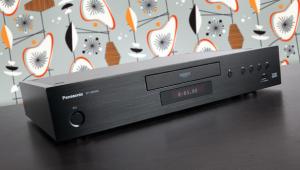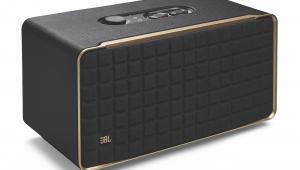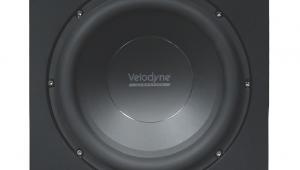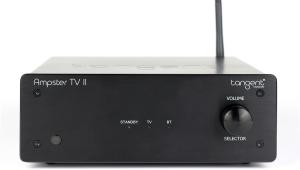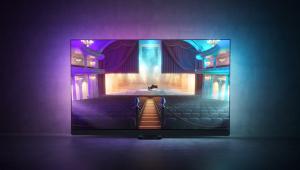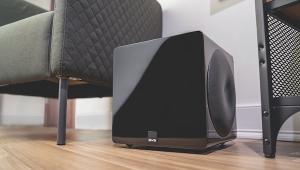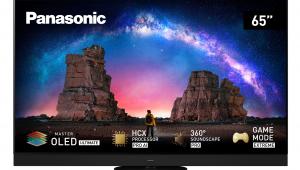Magnetar UDP800 4K Blu-ray player review


The Magnetar brand may be largely unknown, but its first high-end disc spinner is hard to resist, says Steve May
As I listened to Scottish saxophonist Tommy Smith play funky jazz, on a dusted down Super Audio CD, it struck me that perhaps the most compelling reason to invest in the Magnetar UDP800, a deliciously well-specified 4K Blu-ray player, is not for its video performance, which is unquestionably mighty, but its sublime audio.
This audiophile-grade BD player is triggering my dopaminergic neurons, and I'm loving it. Magnetar is a brand with no track record that I'm aware of, but this old-school deck could well restore faith in physical media for even the most lapsed of cinephiles.
So who the heck are Magnetar? Well, the company is based out of China, with European distribution handled by Archisoft, the originator of the Reavon and Zappiti brands, and there may be some overlap between them. Indeed, this machine's nearest competitor appears to be the Reavon UBR-X200, with which it shares many, many similarities, although it's not a clone of that model. Currently, the UDP800 has no UK retailer, but you can buy it direct from France, priced at €1,599, with free shipping.
Silver (disc) service
Availability may be limited, but disc compatibility is wide.
In addition to Ultra HD BD and Blu-ray discs, the UDP800 plays DVD, CD, Super Audio CD and DVD-Audio. DVD playback is unlocked out of the box, playing both Region 1 and Region 2 discs without issue – my US DVD of Raiders
of the Lost Ark spun as hoped, and looked surprisingly good upscaled to 4K. The deck will also play music and movie files from connected external HDD drives; capacities up
to 16TB are supported.
This is a heavyweight contender, its 8kg weight coming in part from its beefy power transformer, and again from a double-layer chassis that includes a 3mm-thick steel under-plate for enhanced rigidity. The Magnetar logo is stamped into the roof of the metal casework. I'm left with the impression this machine would do diligent duty for years to come. If you've got a hunky AV receiver it's perfect partner material.

The front fascia sports a premium-looking hairline finish. To one side of the centrally mounted tray-loading disc mechanism, concealed behind a rubber bung, is a USB media port, while to the right are a line of transport controls and power button.
Around the back are two HDMI outputs (one audio only), a USB v3.0 port, and two digital audio outputs (one coaxial, one optical). There's no Wi-Fi on this player, but you do get an Ethernet port for network connectivity, and RS-232C for system control.
Balancing act
The UDP800's stereo analogue audio outputs cover both RCA phono and balanced XLR options, the latter for use with compatible hardware and the promise of less noise and a significant improvement in signal quality.
A pair of 32-bit, 192kHz Burr-Brown PCM 1795 DACs handle two-channel analogue conversion. Chip watchers might want to know Reavon's UBR-X200 adopted the same silicon (plus a separate Burr-Brown DAC for multichannel), while the older Oppo UDP-205 (see HCC #281) employed ESS HyperStream ES9038PRO devices.
Obviously we welcome both balanced and unbalanced stereo analogue outputs, but a full bank of 7.1 analogue outputs would have been nice considering the price tag here. For this audition, two-channel material was mainly listened to using Chord Shawline stereo interconnects, into a Marantz Cinema 50 AV amplifier, and multichannel audio was delivered via HDMI.

Fuss-free
The player ships with an almost comically busy IR
remote control. If you literally want every menu option
at your fingertips, this wand is made for you. Thankfully, real-world usability is fuss free. Magnetar uses a MediaTek SoC (with support for Dolby Vision and HDR10+, as well as Dolby Atmos and DTS:X immersive audio) and the menu system will look familiar to anyone that's previously used an Oppo. Against a sci-fi backdrop of stars and planets are tabs for Photo, Music, Video, Network and Settings, the last of which includes an HDR output adjustable between HDR Auto, HDR or SDR, which converts all HDR content to standard dynamic range, ostensibly to better match a TV or (more likely) projector.
Like other premium UHD players, the UDP800 has no apps on board, although you can play music and video files from a connected USB device. It also identifies any storage devices you have on your LAN, be they SMB or DMS. With a hard drive parked to the rear, you can effectively use the player as the front end of a personal music jukebox for collected hi-res files. The player will decode DSD to DSD128 and multichannel DSD64, play 192kHz/24-bit PCM, and has AIFF, ALAC, APE, FLAC and WAV file support.
Disc loading times are par for the course, with movies typically going from tray to menu in about 30 seconds. Operational noise is low. There's the inevitable whir but nothing you'll notice under modest volume levels. Picture performance is excellent. The deck presents fine detail without conflicting noise, and manages to find nuance in near black. Guy Ritchie's Sherlock Holmes (4K Blu-ray) opens with an action sequence presented in low light, and Magnetar's disc-spinner details all the sleuth's slo-mo blows with cinematic flair. A test disc containing footage of brightly polished brass instruments exhibited believable lustre. Everything I played looked terrific.
It's quickly evident that UHD Blu-ray still surpasses streaming services when it comes to overall image fidelity. The format streams content off disc far faster than you'll see from a Netflix server. SVoD services typically stream 4K with a bitrate between 10 and 26Mbps, although AppleTV+ quotes higher. Ultra HD Blu-ray can average between 60 and 80Mbps, with peaks even higher (depending on disc capacity and encoding). These numbers obviously don't reflect improvements being made to streaming codecs, but subjective differences remain obvious on larger screens and projection systems.

Rock on, Tommy
But as good as the UDP800's video performance is,
it's just how gorgeous it sounds that convinces me this
is a worthy investment.
That Tommy Smith SACD (Blue Smith), a DSD encode of a direct-to-analogue tape recording made in 1999, is breathtaking in its blend of detail and openness. A 192kHz/24-bit DVD-Audio play of Johannes Brahms' 'Ballade in G Minor', for piano (Claudio Records), has almost three-dimensional depth, gentle reverberation adding spatial scale to the recording.
Naturally, Dolby Atmos and DTS:X streams over HDMI can sound phenomenal. As an aside, the Dolby Digital 5.1 soundmix on my R1 Raiders of the Lost Ark DVD was also ludicrously good, thanks to its wonderful dynamics. Before you junk your old DVD collection, you might want to give those discs another listen…
I'm a believer
Much like vinyl, Blu-ray is looking to be a more resilient format than many predicted at the start of the streaming boom, and an investment in high-end hardware like Magnetar's UDP800 looks increasingly like a smart buy
for those of us with large disc collections, be they CD, DVD
or 4K Blu-ray. Build, specification and performance are formidable. If you're a believer in physical media, it's not going to disappoint.
Buy the UDP800 and before you know it, I'll bet you'll be scouring online sites and record stores for obscure releases on all manner of shiny platters. Just like Indiana Jones.
HCC Verdict: 5/5
Magnetar UDP800
Price: €1,599
https://magnetar-audio.eu
We say: This hugely impressive disc spinner will renew your enthusiasm for physical media. Audio and video quality is superb, and build quality is unbeatable.
Specifications
3D: Yes Ultra HD: Yes HDR: Yes. HDR10; Dolby Vision; HDR10+ Upscaling: Yes. 2,160p Multiregion: No. Region B BD (but Region-free DVD) HDMI: Yes. 2 x outputs (one audio-only) Multichannel analogue output: No Digital audio output: Yes. 1 x optical digital audio; 1 x coaxial digital audio Ethernet: Yes Built in Wi-Fi: No SACD/DVD-A: Yes/Yes Dimensions: 430(w) x 90(h) x 300(d)mm Weight: 8kg
Features: Balanced XLR and RCA stereo analogue outputs; 2 x USB ports; RS-232 control port; DLNA media playback; dedicated stereo DAC; audio decoding to 7.1 channel PCM, 5.1 channel DSD; HDR-to-SDR conversion; Pure Audio mode
 |
Home Cinema Choice #351 is on sale now, featuring: Samsung S95D flagship OLED TV; Ascendo loudspeakers; Pioneer VSA-LX805 AV receiver; UST projector roundup; 2024’s summer movies; Conan 4K; and more
|






